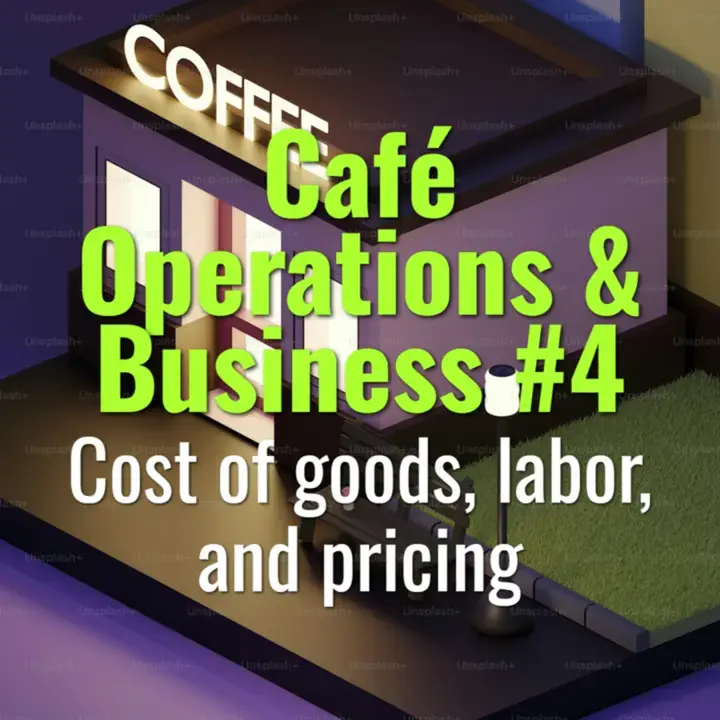Cost of goods, labor, and pricing
How cafés calculate and balance cost of goods sold (COGS), labor costs, and pricing strategies to maintain profitability while staying competitive.
- Coffee Basics Nerds
- 2 min read
Article 4 of 12 in Café Operations & Business/

Key Cost Categories
1. Cost of Goods Sold (COGS)
- Includes all ingredients and consumables (coffee, milk, syrups, filters, cups).
- Target range for cafés: 25–35% of sales.
- Example: If a latte sells for $5 and ingredients cost $1.25 → 25% COGS.
2. Labor Costs
- Includes wages, benefits, and training expenses.
- Target range: 30–35% of sales (varies by market and wage laws).
- Efficient scheduling helps balance peak vs. off-peak labor demand.
3. Overhead
- Rent, utilities, equipment depreciation, insurance, marketing.
- Often 20–25% of sales.
Pricing Strategy
- Retail pricing must cover COGS + labor + overhead + profit margin.
- Formula: Price = (COGS ÷ Target COGS %) Example: $1.25 latte cost ÷ 0.30 target COGS = $4.17 → round to $4.25–$4.50.
Profit Margins
- Healthy cafés aim for 10–15% net profit margin.
- Achieved by optimizing both costs and revenue.
Balancing Costs
- Lowering COGS: Negotiate supplier contracts, reduce waste, portion control.
- Managing Labor: Smart scheduling, cross-training, technology support (POS integration).
- Pricing Decisions: Account for customer willingness to pay, competitor pricing, brand positioning.
Monitoring Tools
- Weekly COGS and labor % reports.
- POS systems with recipe-level costing.
- Break-even analysis for new menu items.
Summary
Café profitability relies on balancing COGS (~30%), labor (~30%), and overhead (~25%), leaving room for profit. Smart pricing strategies, efficient scheduling, and waste reduction are essential to remain sustainable and competitive.